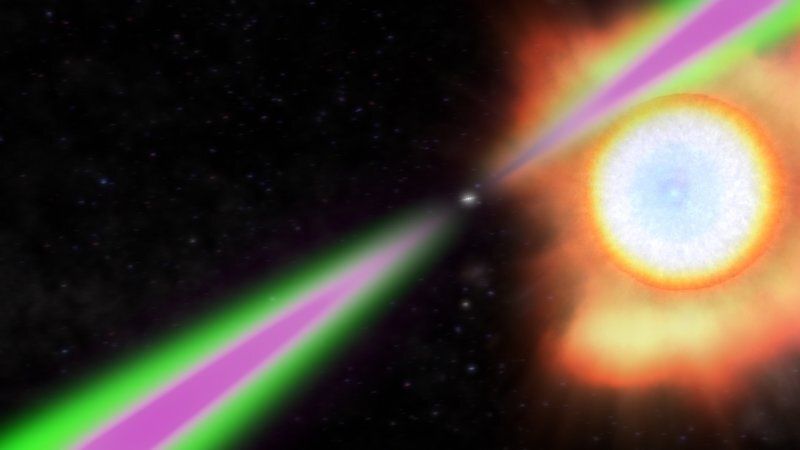An international research team led by the Max Planck Institute for Gravitational Physics (Albert Einstein Institute; AEI) in Hannover has discovered that the radio pulsar J0952-0607 also emits pulsed gamma radiation. J0952-0607 spins 707 times in one second and is second in the list of rapidly rotating neutron stars. By analyzing about 8.5 years worth of data from NASA’s Fermi Gamma-ray Space Telescope, LOFAR radio observations from the past two years, observations from two large optical telescopes, and gravitational-wave data from the LIGO detectors, the team used a multi-messenger approach to study the binary system of the pulsar and its lightweight companion in detail. Their study published in the Astrophysical Journal shows that extreme pulsar systems are hiding in the Fermi catalogs and motivates further searches. Despite being very extensive, the analysis also raises new unanswered questions about this system.
Pulsars are the compact remnants of stellar explosions which have strong magnetic fields and are rapidly rotating. They emit radiation like a cosmic lighthouse and can be observable as radio pulsars and/or gamma-ray pulsars depending on their orientation towards Earth.
